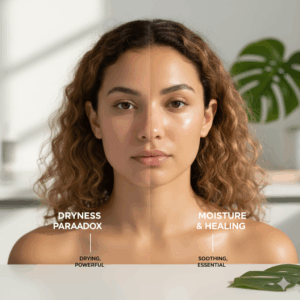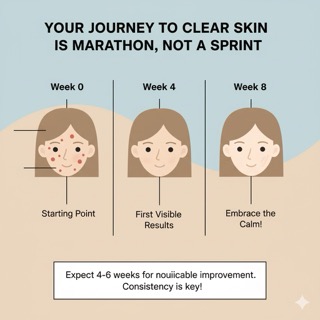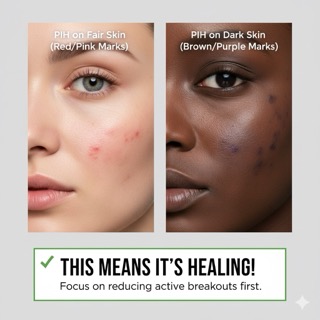The Emotional State of Relief: Patience is the First Ingredient
At Skin 2000, we know the emotional state of Relief doesn’t come instantly. When you look in the mirror, you want breakouts gone now, but effective treatment—even with the most active ingredients—requires patience.
For those frustrated by complex routines and slow progress, it is vital to know that the process is working, even if it feels slow. Here is the science of what to expect and how to reframe your timeline.
The Scientific Timeline: Why It Takes 4-6 Weeks
It’s crucial to set realistic expectations:
Treatment may take 4 weeks to show results. If you have moderate to severe active inflammatory papules, a longer period of treatment (e.g., three months) may be necessary before considering options like Isotretinoin (oral medication). The body’s cellular turnover rate and the time it takes for inflammation to subside simply require patience.
Navigating Initial Side Effects: The Dryness Paradox
 Many topical acne medications are designed to be highly active, which means initial side effects are common.
Many topical acne medications are designed to be highly active, which means initial side effects are common.
Dryness and Peeling: Initial dryness and peeling can occur with treatment.
The Solution is Moisture: The goal of management is to achieve healthy, hydrated skin by balancing oil production and dryness. This is why moisturizers are important, especially since topical acne medications are drying
Beyond the Breakout: Understanding Post-Acne Marks (PIH)
Even as your routine improves acne, you may still see discoloration, which can be discouraging.
What is PIH? As acne lesions heal, they can leave behind temporary discoloration, appearing as pink marks on lighter skin tones and dark marks on darker skin tones. This is known as post-inflammatory hyperpigmentation.
A Sign of Progress: It is important to explain that the presence of these marks means their condition is improving. The primary objective is to first reduce the number of active breakouts. Once acne is fully controlled, the post-inflammatory hyperpigmentation can then be addressed.
How To Track Your Improvement
To avoid getting discouraged by visual marks, we encourage you to track progress scientifically:
Feel Your Skin: Encourage yourself to feel your skin to assess for fewer bumps, rather than relying solely on visual assessment.
Consistent Protection: Daily use of a zinc-based sunscreen moisturizer during and after treatment can help reduce the appearance of temporary scars.
Your frustration is valid, but your persistence will be rewarded. Trust the science and commit to consistency.


